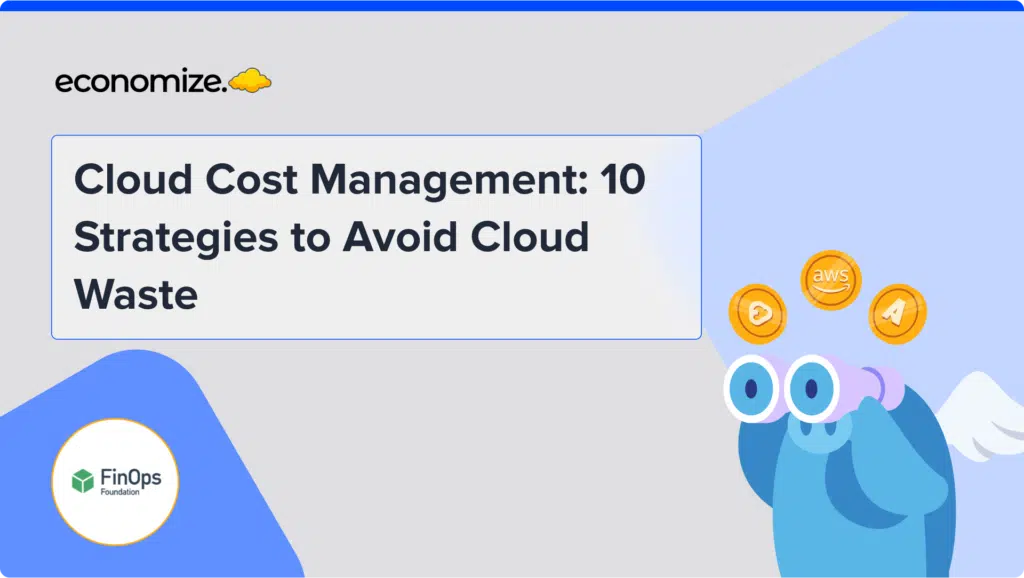Azure Kubernetes Service (AKS) addresses critical challenges faced by developers and system administrators, including container management, microservice architecture, and application scaling. It eliminates the complexity of handling Kubernetes, offering streamlined operations, automatic scaling, and integrated management tools.
In this guide, we cover the essentials of Azure Kubernetes Services, providing a comprehensive overview of its architecture, benefits, and core functionalities. We will also explore a practical tutorial on creating and managing Kubernetes clusters within the Azure environment.
What are Azure Kubernetes Services (AKS)?
At the heart of modern application development lies the concept of containerization, a method that packages software in a way that’s abstracted from the environment in which it actually runs. This abstraction facilitates consistent, efficient, and scalable deployments. Azure Kubernetes Services (AKS) is Microsoft’s managed container orchestration service, designed to simplify the deployment, management, and operations of containerized applications through Microsoft Azure.

How Azure Complements Kubernetes
Kubernetes, originally developed by Google, has set the standard for container orchestration, offering the tools necessary to manage containers at scale. Azure Kubernetes Services extends Kubernetes’ functionality with a suite of features that enhance its efficiency, scalability, and manageability.
What are Kubernetes Clusters in Azure?
A Kubernetes cluster consists of at least one master and multiple worker nodes. The master node manages the cluster, while the worker nodes run the containerized applications.
In Azure, these clusters are fully managed, reducing the operational overhead for users. It adds value to Kubernetes clusters with additional features like integrated logging and monitoring, seamless integration with Azure services, and advanced security features.
Azure Kubernetes Services Architecture Diagram
AKS architecture weaves together several critical components, each playing a pivotal role in the service’s operation and efficiency. Here’s an in-depth look at the key architectural elements that form the backbone of AKS:

| Architecture Component | Description |
|---|---|
| Control Plane | The central management entity of AKS, the control plane includes managed Kubernetes components like the API server, etcd, controller manager, and scheduler. It maintains the cluster’s state, configuration, and ensures seamless integration with Azure services. |
| Node Pools | Collections of virtual machines or VM scale sets acting as worker nodes. Each node pool can have specific configurations (e.g., VM sizes, operating systems, availability zones) to suit different workload requirements. |
| Pods | The smallest deployable units in a Kubernetes cluster, consisting of one or more containers that share storage and network. AKS schedules and runs containers within these pods across the worker nodes. |
| Services | Abstractions that define logical sets of pods and a policy by which to access them. They facilitate communication within the application and with external users, ensuring connectivity between different application components. |
| Ingress | A set of rules that manage external access to the services in a cluster, providing capabilities like load balancing, SSL termination, and name-based virtual hosting. In AKS, Ingress can be managed using Azure Application Gateway or Kubernetes-native ingress controllers. |
Azure Kubernetes Services (AKS) Use Cases
Microservices Architectures
AKS provides a dynamic and scalable environment to host microservices, offering rich features for service discovery, autoscaling, and load balancing. This makes it an ideal platform for organizations adopting microservices to accelerate development cycles and improve service reliability.
Batch Processing
For workloads that require processing large volumes of data in batches, AKS can dynamically allocate resources to match the workload demands. This capability is essential for scenarios like financial modeling, scientific simulations, and big data analytics.
Machine Learning and AI
AKS facilitates the deployment and scaling of machine learning models by providing a flexible platform that can handle variable computational loads. Integration with Azure AI and Machine Learning services further streamlines the development and deployment of AI-driven applications.
DevOps and Continuous Delivery
AKS integrates seamlessly with CI/CD pipelines, enabling teams to automate the build, test, and deployment phases of application development. This accelerates time-to-market and improves the overall quality of software releases.
How to Create an Azure Kubernetes Services Cluster – Tutorial
Creating an Azure Kubernetes Service (AKS) cluster is a straightforward process, designed to set you up with a fully managed Kubernetes environment in a few simple steps. Before beginning, ensure you have an active Azure subscription. If not, sign up for a free account on the Azure website.
Creating an AKS Cluster : Step-by-Step Guide
- Login and Resource Creation
- Navigate to the Azure portal and log in.
- On the Azure portal menu or Home page, select “Create a resource.”
- Choose “Containers” and then “Kubernetes Service.”
- Configure Cluster Basics
- Under the “Basics” tab, fill out the following:
- Project details: Select your Azure Subscription and either pick an existing Azure Resource Group or create a new one, such as
myResourceGroup. - Cluster details: Choose the “Standard ($$)” option for Preset configuration (for details on presets, refer to Azure’s documentation). Name your Kubernetes cluster (e.g.,
myAKSCluster) and select a region. Leave the Kubernetes version at its default setting and ensure API server availability is set to 99.5%.
- Project details: Select your Azure Subscription and either pick an existing Azure Resource Group or create a new one, such as
- Under the “Basics” tab, fill out the following:
- Primary Node Pool Settings
- Click “Next: Node pools” and keep the default settings for the primary node pool.
- Access Configuration
- In the “Access” tab, keep “System-assigned managed identity” for Resource identity. This setup provides a secure identity for applications to use with Azure AD-authenticated resources.
- Ensure Kubernetes role-based access control (RBAC) is set to default for enhanced security and granular control over resource access within your AKS cluster.
- Networking and Integrations
- Proceed to “Next: Networking” and retain the default network settings.
- In the “Integrations” tab, activate “Enable recommended alert rules” for AKS clusters to set up essential alerts out-of-the-box. This feature will automatically enable a list of critical alerts for monitoring cluster health and performance.

- Review and Create
- After configuring the settings, navigate to “Review + create.” Azure will validate your configuration. If successful, you can create the AKS cluster by clicking “Create.” If there are issues, Azure will highlight the necessary adjustments.
- Cluster creation takes a few minutes. Once completed, you can access your AKS cluster by either clicking “Go to resource” or by going to your AKS cluster resource group and selecting the AKS resource, in this case,
myAKSCluster.
By following these steps, you’ll have successfully deployed an AKS cluster, ready for containerized applications.
Frequently Asked Questions (FAQs)
AKS vs ACS: What’s the Difference?
Azure Kubernetes Service (AKS) and Azure Container Service (ACS) are both container orchestration services provided by Microsoft Azure. While ACS offered support for multiple orchestrators (Kubernetes, Docker Swarm, and Mesosphere DC/OS), AKS is solely focused on Kubernetes, providing a more streamlined and Kubernetes-centric experience. ACS has been deprecated in favor of AKS, which offers enhanced management features, deeper integration with Azure services, and a simplified user interface.
Is Azure Kubernetes Services Serverless Computing?
AKS itself is not considered serverless computing because it involves managing container instances and their associated resources. However, AKS supports serverless Kubernetes workloads via virtual nodes and Azure Container Instances (ACI), allowing applications to scale without managing the underlying servers, thus providing a serverless experience within a Kubernetes environment.
How Secure is AKS?
AKS offers integrated security features that include network policies, role-based access control (RBAC), Azure Active Directory integration, and secure access to resources using managed identities. It also provides security monitoring and threat protection through Azure Security Center, ensuring that AKS clusters are protected from a wide range of threats.
What Are the Cost Implications of Running AKS?
While AKS does not charge for the Kubernetes management infrastructure, users pay for the compute instances, storage, and networking resources consumed by their applications and Kubernetes nodes. The cost can vary based on the resources provisioned, making it important to optimize resource usage and select the appropriate VM sizes and services based on your application needs.
What Is the Best Way to Monitor AKS Clusters?
The best way to monitor AKS clusters is by using Azure Monitor for containers, which provides a centralized view of your Kubernetes clusters’ performance, health, and monitoring data. It integrates with AKS to collect metrics, logs, and events, helping you track the health and performance of your applications and infrastructure.
Conclusion
By offering a fully managed Kubernetes environment, AKS alleviates the complexities associated with container orchestration, allowing developers and IT professionals to focus on innovation rather than infrastructure. As the cloud landscape continues to evolve, AKS establishes itself as a forward-thinking platform that meets the demands of today’s dynamic application development requirements, setting a high standard for what’s possible in the domain of container orchestration.
How can we help?
Are your cloud bills soaring high? Don’t let cloud costs weigh you down anymore. With Economize, you can slash your cloud expenditures by up to 30% effortlessly. Book a free demo with us today and discover how we can help you start saving in as little as 10 minutes.









